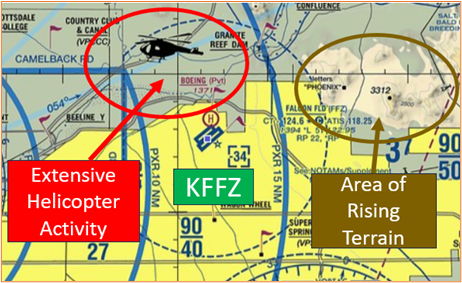Falcon Field, Mesa, AZ (FFZ)
Falcon Field Airport (FFZ) is a primarily general and business aviation airport located approximately 14 miles east of Phoenix Sky Harbor (PHX). A narrow corridor of airspace exists above the FFZ Class Delta airspace, and below the Class Bravo airspace for PHX, providing a way for VFR aircraft to transition through the area without the need to contact ATC. This corridor can be very busy, so pilots are reminded to maintain increased situational awareness while arriving or departing Falcon Field. View a printable Pilot Handbook of the FFZ information found on this Web page.
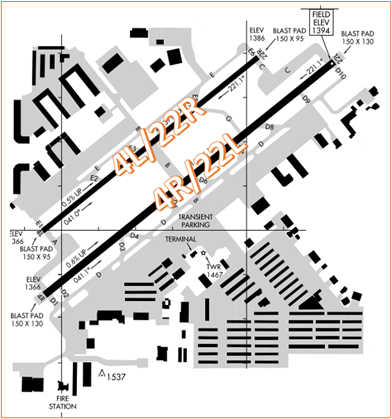
Know Before You Go
The RWY configuration consists of parallel RWYs 4L/22R and 4R/22L.
The airspace at FFZ is Class D and underlies Phoenix Class B. (See sectional chart)
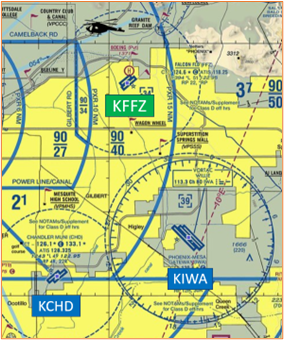
Below find various FFZ-specific information and things to be aware of, as well as general information to inform your preflight planning. This will be reviewed quarterly and updated as needed. This information is to supplement the From the Flight Deck Videos that are produced by the FAA Runway Safety Group. Here you will also find information provided by the local air traffic controllers at the airport where you intend to fly. The information is subject to change. Not for navigation or legal* pre-flight action. Always refer to official pre-flight materials such as, but not limited to, NOTAMs, airport diagrams, VFR charts and airport construction notices for the latest airport-specific details.
FFZ ATCT operates 0600L-2100L
Administrative Office Open 0700L to 1500L M-F
Business Phone 480-981-1367
Wrong Surface Landing Risk
- Wrong Surface Landing risk exists due to closely spaced parallel RWYs with staggered thresholds - See Arrival Alert Notices
- Whenever a TWY runs parallel to a RWY, the risk of landing on a TWY increases.
- If available, back up all visual approaches with an instrument approach to help ensure that you are lined up for the correct surface.
- View the From the Flight Deck-Wrong Surface Landings video for additional mitigation strategies.
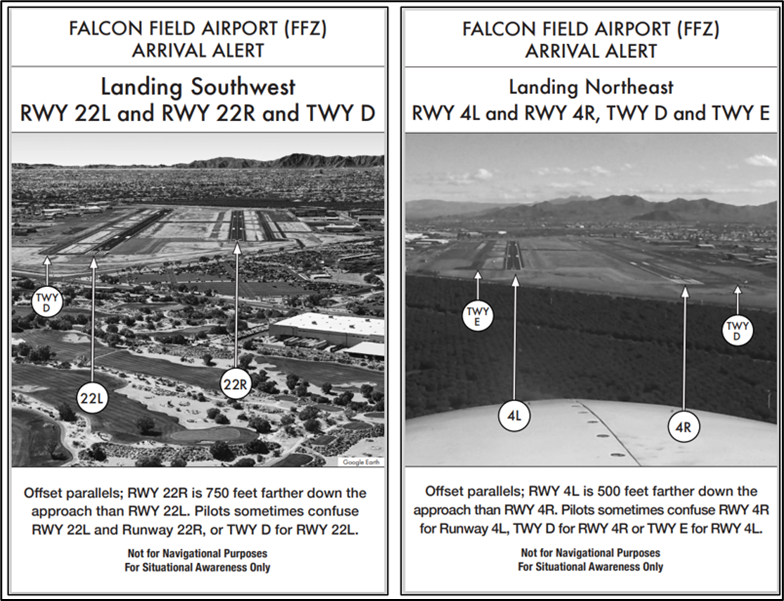
Surface Risk - Movement Area Cautions
- After landing, be sure to taxi completely clear of the RWY you are exiting and hold short (if applicable) of the RWY that you are approaching.
- When landing on RWY 4L/22R and exiting to the south, if unable to exit on TWY B, roll past it without hesitation, continue to the end with no delay and taxi clear of the RWY.
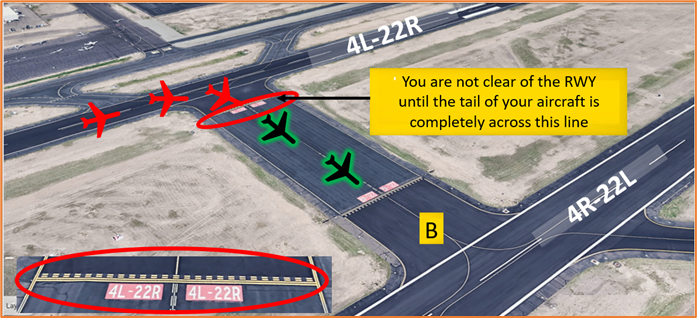
General
- Practice good radio etiquette to avoid frequency congestion. Please include your call sign with all hold-short instructions, and runway assignments.
- RWY 4R and RWY 4L are preferred RWYs when wind conditions are less than 5 kts.
Ground Control
- Please check in with your call sign, position, requested direction of flight, and ATIS all at once.
Takeoff/Departure
- Watch for traffic from the parallel runway.
- FFZ utilizes “Line Up and Wait” (LUAW) to inform a pilot to taxi onto the departure RWY and hold position until cleared for takeoff. It is not authorization for takeoff. For mitigation strategies, view the From the Flight Deck-Line Up and Wait video.
Arrival/Landing
- Avoid flying through final into parallel final.
- During periods of moderate to heavy traffic FFZ utilizes two TWR controllers – one for each RWY. In this configuration, aircraft exiting either RWY and turning towards the other RWY will be instructed to hold short of the other RWY and contact TWR on the other frequency.
- Phoenix Sky Harbor Approach Control, to the extent possible, will provide IFR separation to VFR aircraft conducting practice instrument approaches. Review NOTAMS for the Letter to Airmen LTA-P50-57 “VFR Practice Approaches” for specific information.
Special Traffic-Helicopters
- Use caution for helicopter training inside and below the North pattern.
Additional Information
- RWY 4L/22R closed when TWR is closed.
- Right Traffic on RWY 22L when TWR is closed.
- Coyotes and other wildlife occasionally crossing RWYs and TWYs.
- Turbulent conditions may be encountered below 500’ AGL near ground test site 1.5 miles north of the airport.
- Rising terrain northeast of the airport.
- Extensive fixed wing and rotorcraft flight training activity.
